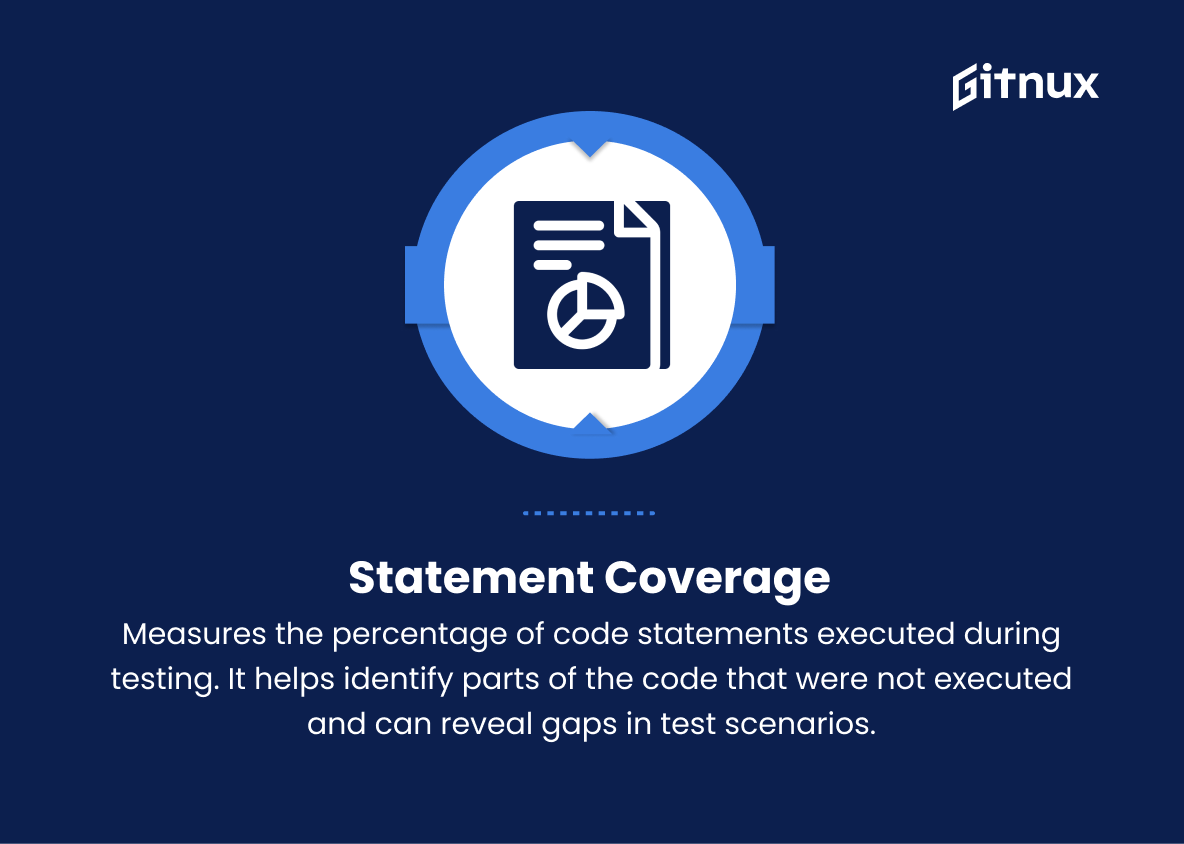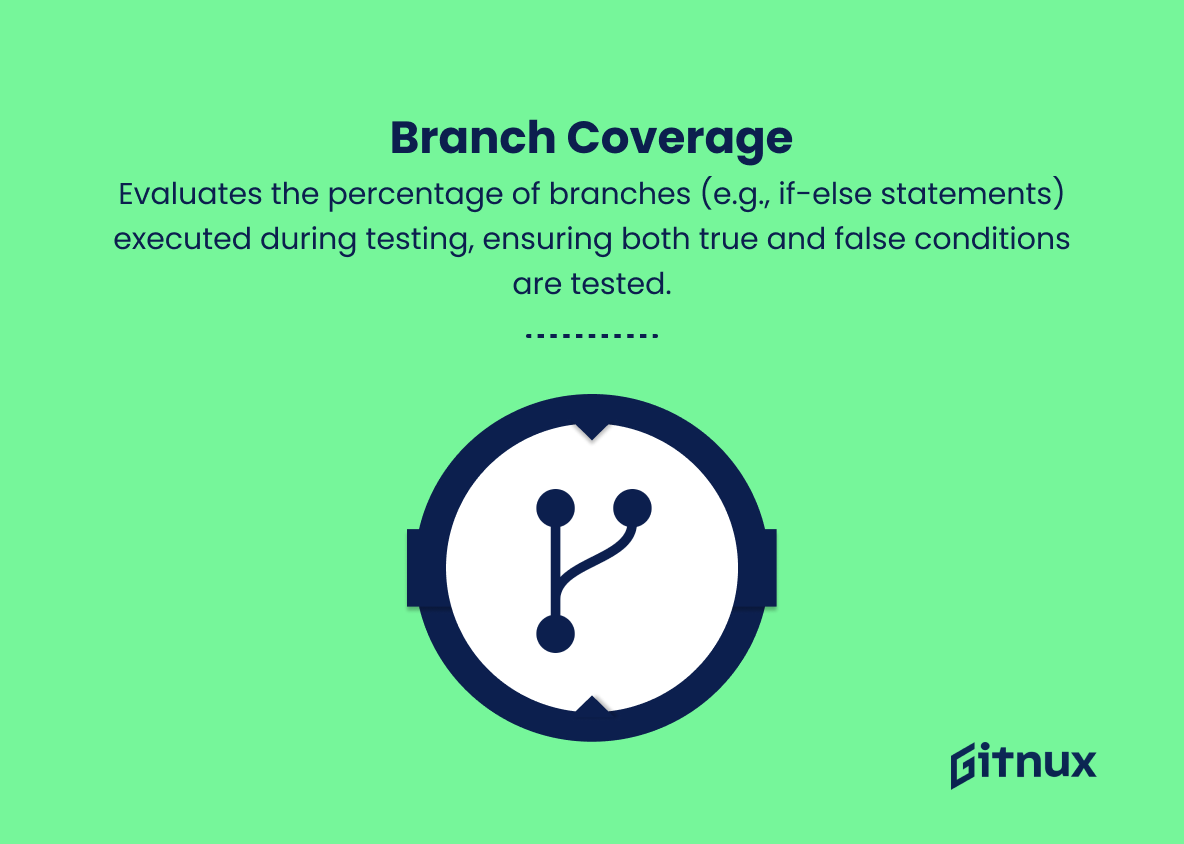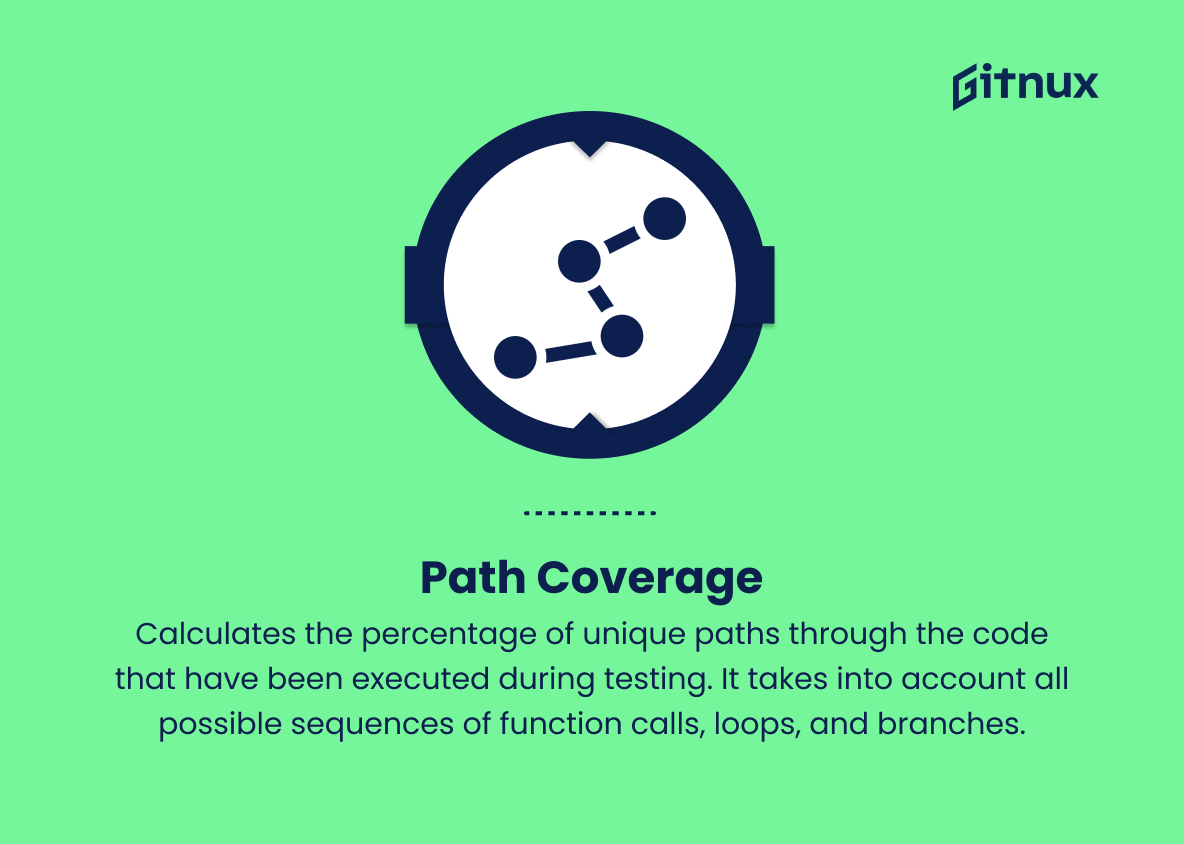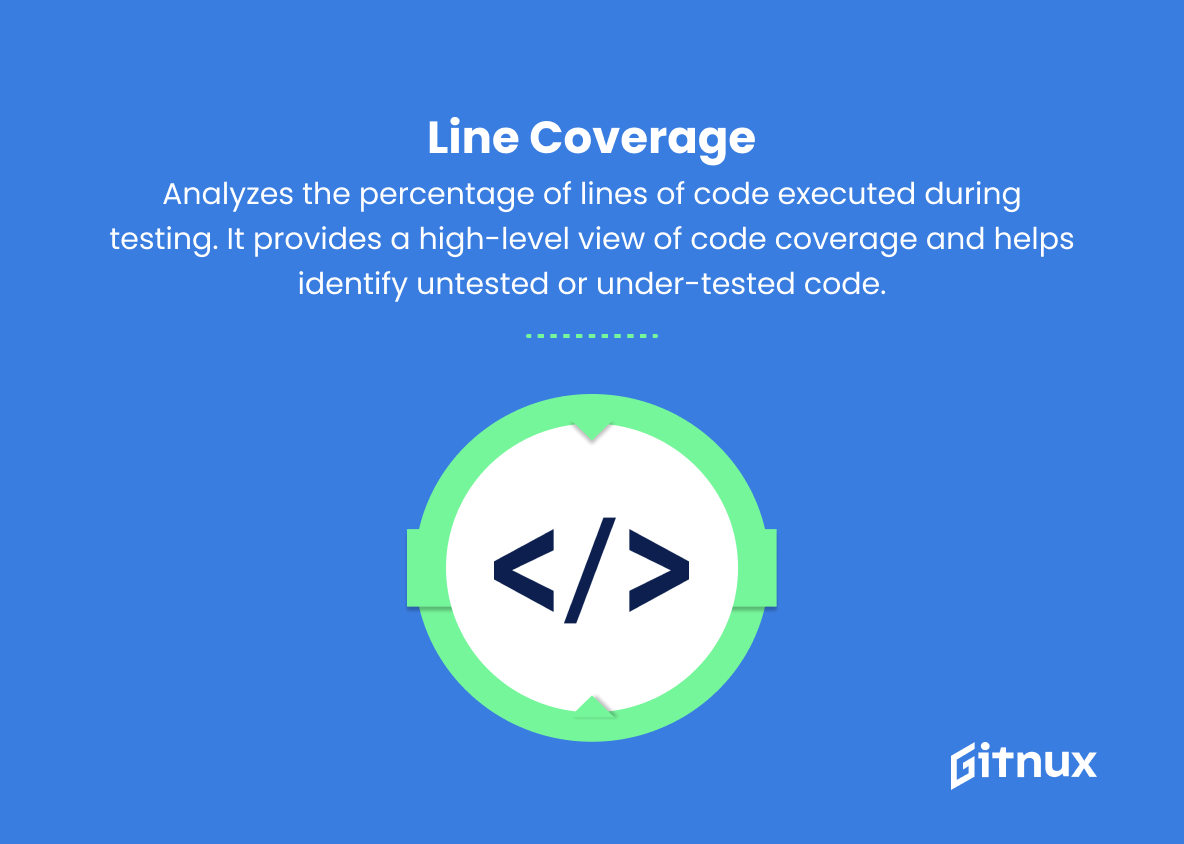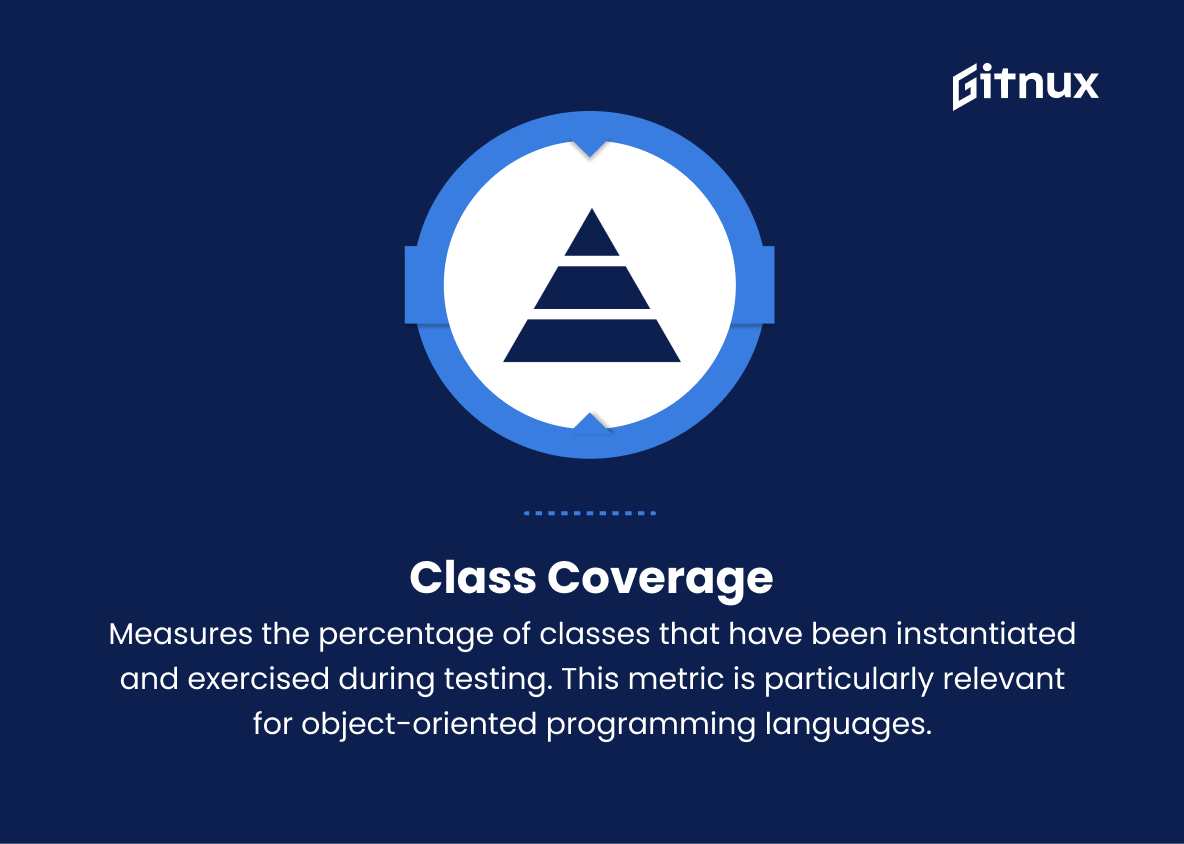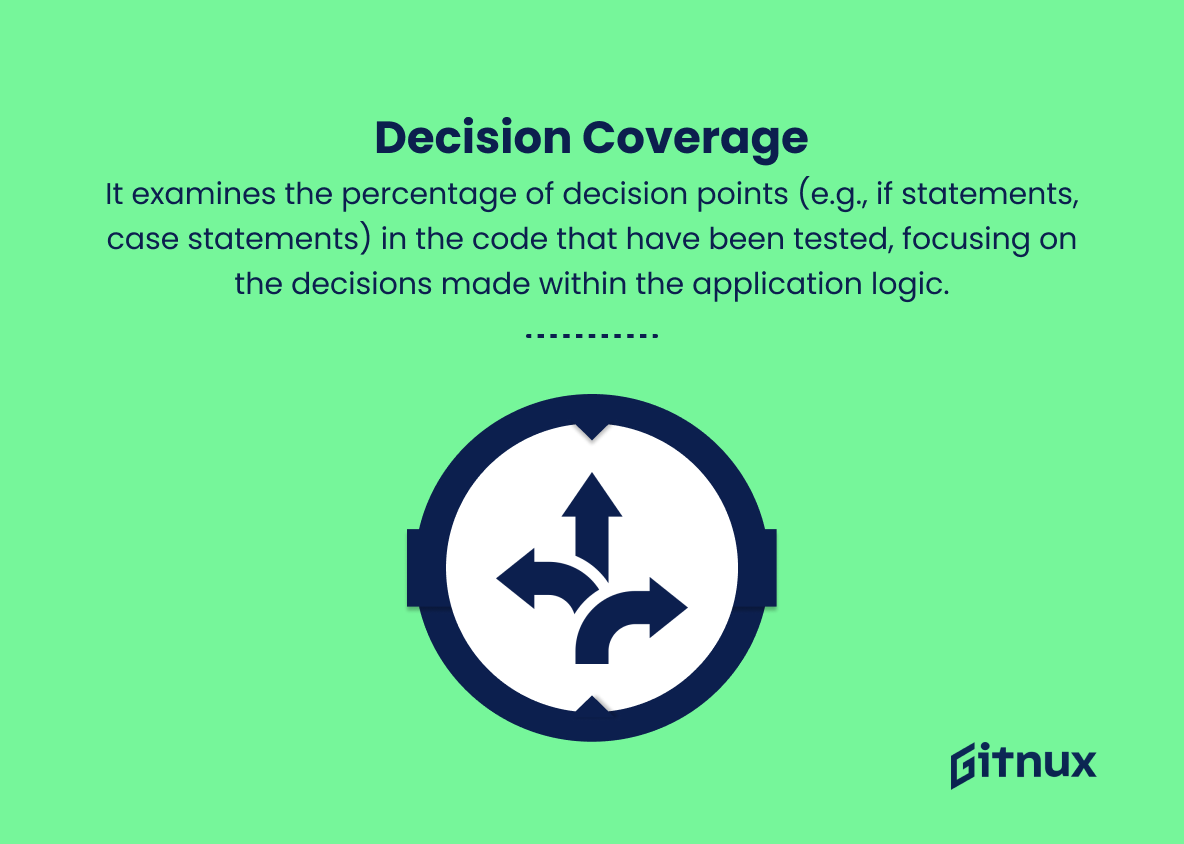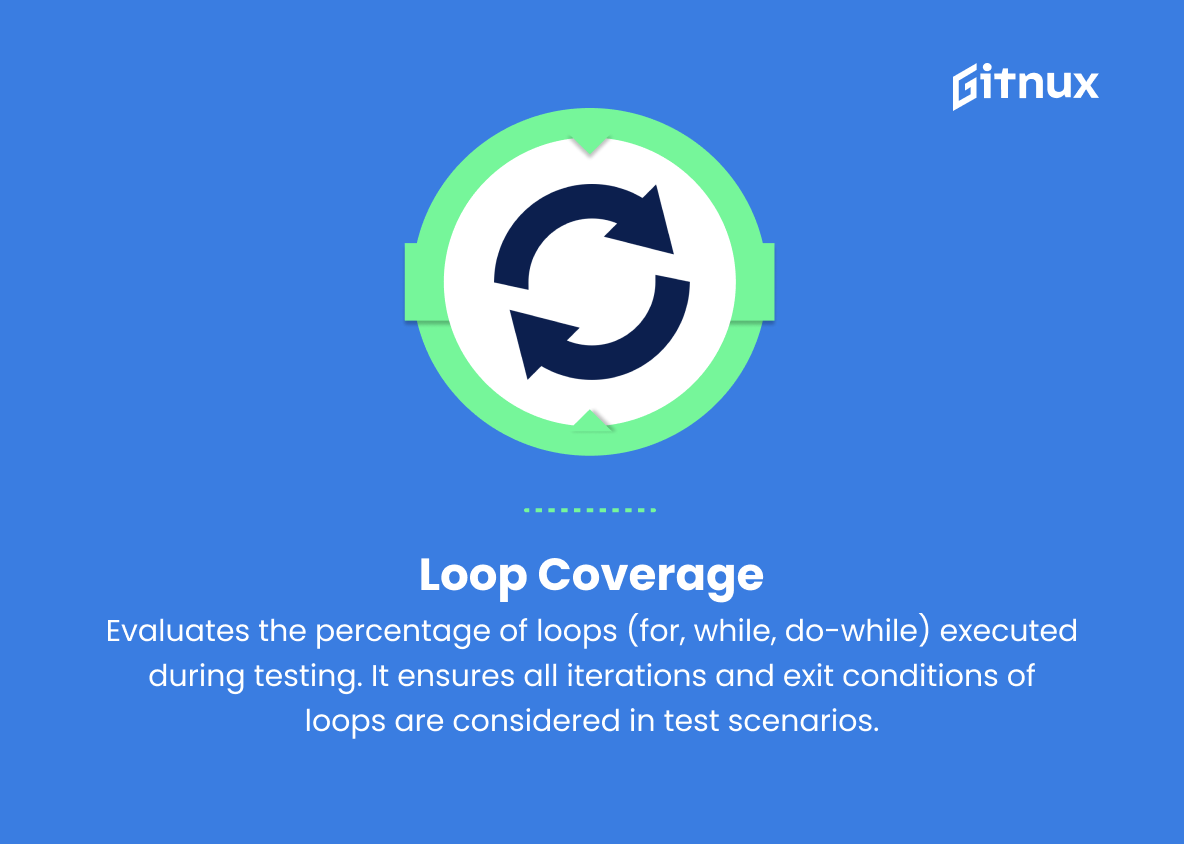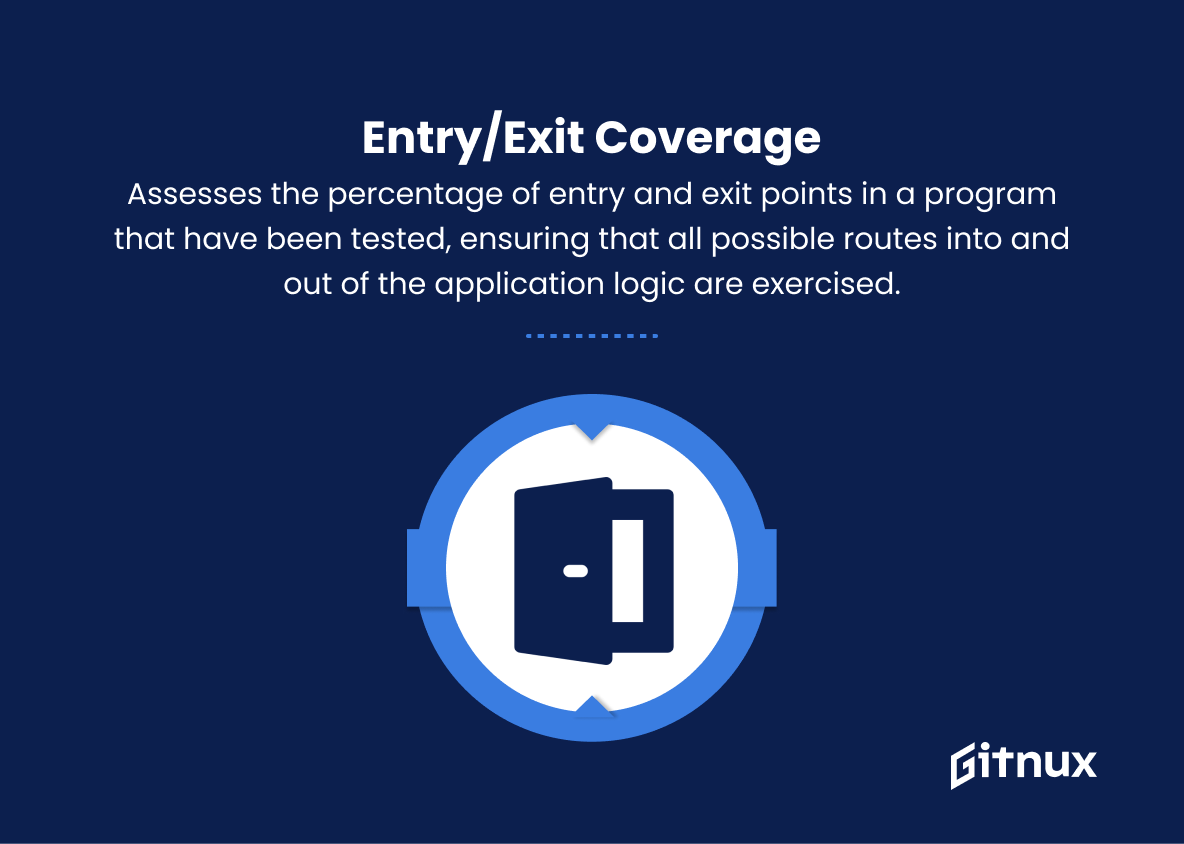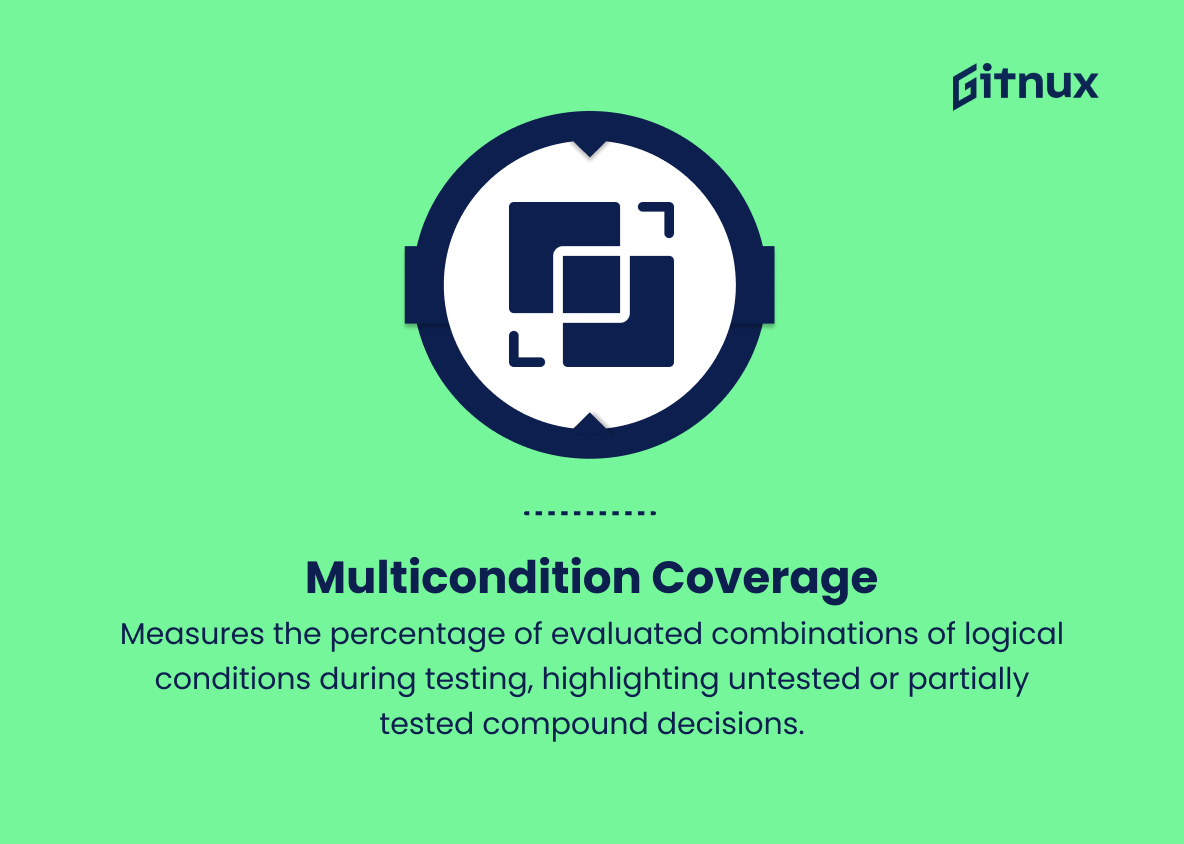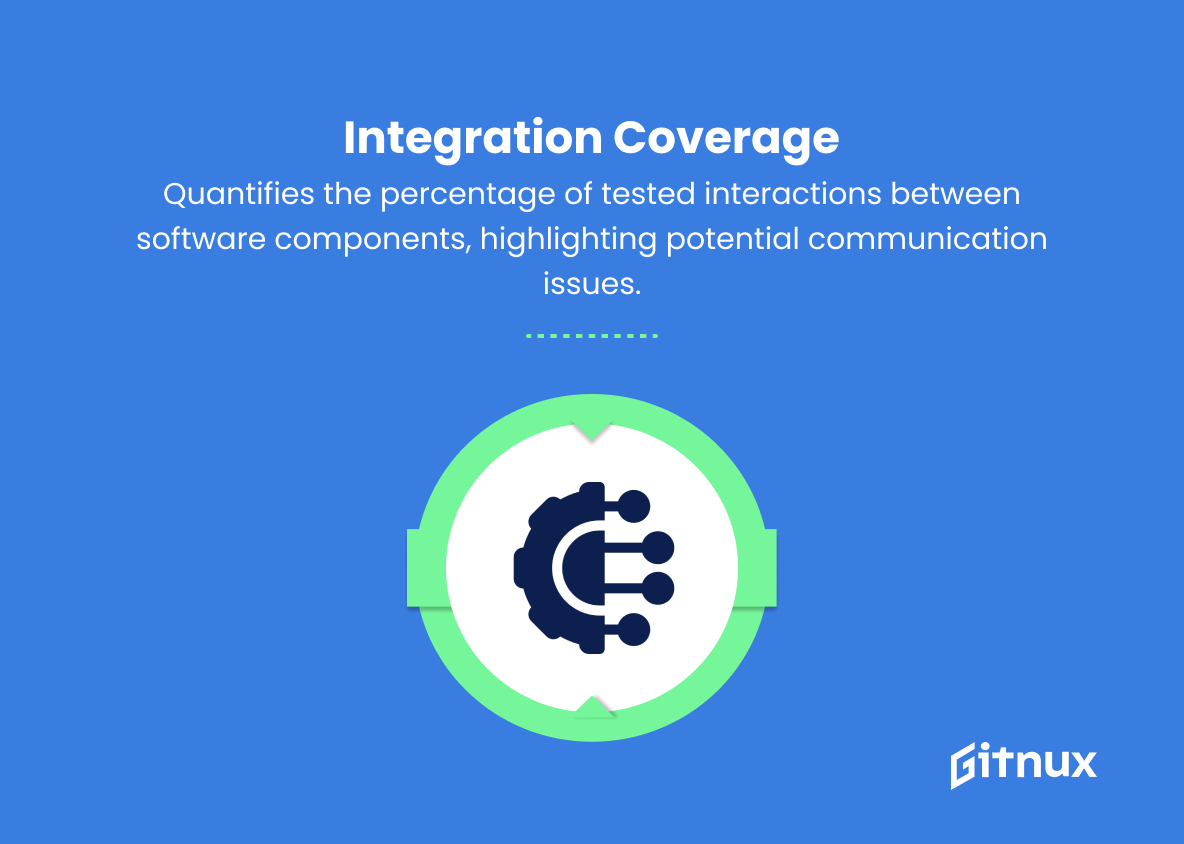In the complex world of software development, ensuring the quality and reliability of your code is of paramount importance. One crucial aspect of this process is measuring code coverage, a metric that provides developers with valuable insights into the effectiveness of their testing strategies. In this blog post, we will delve into the significance of code coverage metrics, exploring their role in optimizing the testing process, enhancing code maintainability, and ultimately improving the overall performance of your software.
Join us as we unravel the intricacies of code coverage, discuss various methods for calculating these metrics, and offer practical guidance on interpreting the results to make informed decisions that will drive your project toward success.
Code Coverage Metrics You Should Know
1. Statement Coverage
Measures the percentage of code statements executed during testing. It helps identify parts of the code that were not executed and can reveal gaps in test scenarios.
2. Branch Coverage
Evaluates the percentage of branches (e.g., if-else statements) executed during testing, ensuring both true and false conditions are tested.
3. Function Coverage
Assesses the percentage of program functions or methods that have been called during testing. It helps identify untested portions of the codebase and incomplete test suites.
4. Condition Coverage
Quantifies the percentage of logical conditions within a program that have been evaluated during testing, ensuring all possible outcomes of each condition are tested.
5. Path Coverage
Calculates the percentage of unique paths through the code that have been executed during testing. It takes into account all possible sequences of function calls, loops, and branches.
6. Line Coverage
Analyzes the percentage of lines of code executed during testing. It provides a high-level view of code coverage and helps identify untested or under-tested code.
7. Class Coverage
Measures the percentage of classes that have been instantiated and exercised during testing. This metric is particularly relevant for object-oriented programming languages.
8. Decision Coverage
Examines the percentage of decision points (e.g., if statements, case statements) in the code that have been tested. It’s a variation of branch coverage that focuses on the decisions made within the application logic.
9. Loop Coverage
Evaluates the percentage of loops (for, while, do-while) executed during testing. It ensures all iterations and exit conditions of loops are considered in test scenarios.
10. Entry/Exit Coverage
Assesses the percentage of entry and exit points in a program that have been tested, ensuring that all possible routes into and out of the application logic are exercised.
11. Multicondition Coverage
Measures the percentage of combinations of logical conditions that have been evaluated during testing. It helps identify untested or partially tested compound decisions (e.g., where multiple conditions contribute to a single decision).
12. Integration Coverage
Quantifies the percentage of interactions between individual software components, sub-systems or classes that have been tested. It helps identify potential issues in communication and data transfer between different parts of the application.
Code Coverage Metrics Explained
Code coverage metrics play a vital role in measuring the effectiveness of software testing, ensuring that every aspect of the code is thoroughly examined and validated. Statement coverage helps reveal gaps in test scenarios by measuring the percentage of code statements executed, while branch coverage evaluates the execution of both true and false conditions. Function coverage assesses the extent to which program functions or methods are tested, and condition coverage ensures that all logical conditions within a program are evaluated.
Additionally, path coverage calculates the percentage of unique paths through the code executed during testing, considering all possible sequences of function calls, loops, and branches. Line coverage, class coverage, and decision coverage provide high-level views of the code’s comprehensiveness, helping identify untested or under-tested code. Loop coverage focuses on the execution of loops and their exit conditions, and entry/exit coverage evaluates the testing of all possible routes into and out of the application logic. Multicondition coverage measures the combinations of logical conditions evaluated, highlighting untested or partially tested compound decisions.
Finally, integration coverage quantifies the interactions between software components and helps identify potential issues in communication and data transfer. Altogether, these code coverage metrics collectively ensure a robust and reliable software application by providing comprehensive insight into the code’s testing process.
Conclusion
In closing, Code Coverage Metrics play a vital role in assessing the overall health and quality of a software project. They provide developers and stakeholders with valuable insights into the effectiveness of their test suites, helping highlight potential gaps and vulnerabilities before they become critical issues. By understanding and implementing Code Coverage Metrics, development teams can make informed decisions to improve their codebase, cultivate a proactive testing culture, and ultimately deliver exceptionally robust software.
However, it’s important to remember that achieving 100% code coverage should not be the end goal, as it is the perfect marriage of code quality, testing practices, and continuous improvement that creates an ideal software development environment.
